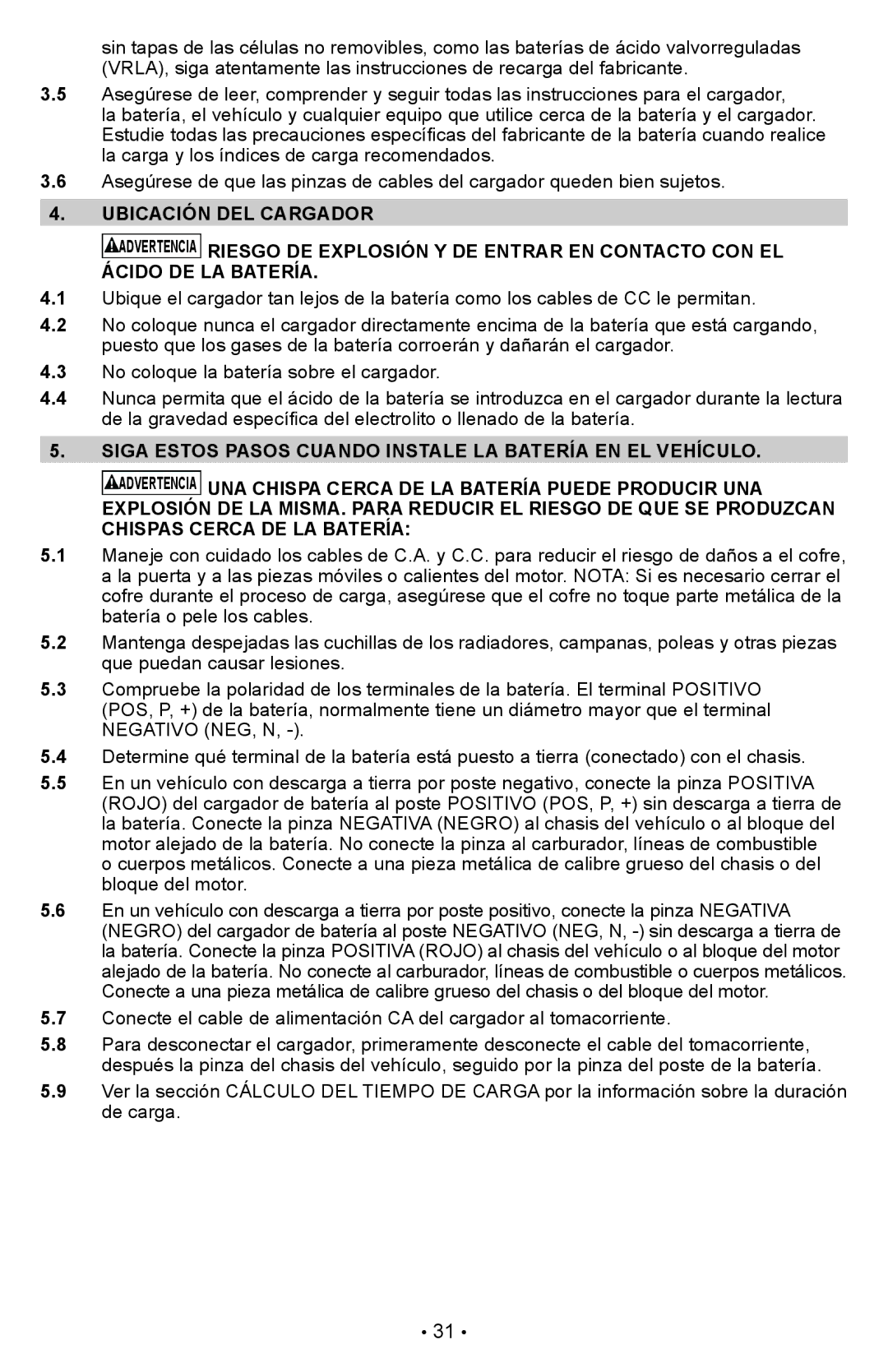PWI70300A specifications
The Schumacher PWI70300A is a versatile and powerful 7 Amp fully automatic battery maintainer and charger that has been designed to cater to the needs of both everyday drivers and automotive enthusiasts. This model stands out for its blend of advanced technology and user-friendly features, making it suitable for various battery types, including 6V and 12V lead-acid batteries.One of the main features of the PWI70300A is its automatic multi-stage charging system. This technology helps in optimizing battery performance and lifespan by delivering the appropriate charge based on the battery's condition. It automatically switches from bulk charge to absorption and then to maintenance mode once the battery reaches full charge, ensuring that there is no overcharging, which can cause damage.
The lightweight and compact design of the PWI70300A enhances its portability, allowing users to easily carry it around or store it in tight spaces. Additionally, the unit comes equipped with a user-friendly LED indicator, which provides real-time feedback about the charging status. This feature simplifies the charging process, as users can easily gauge whether the battery is charging, fully charged, or requires attention.
Notably, the PWI70300A is designed with safety as a priority. It includes built-in protections against reverse polarity, short circuit, and over-temperature, which significantly reduces the risks associated with battery charging. This makes it an ideal choice for those who may not have extensive experience with battery maintenance.
The Schumacher PWI70300A also shines in its versatility, as it is compatible with a wide range of electrical vehicles, including cars, motorcycles, and ATVs. This makes it a valuable addition to the toolkit of any vehicle owner. The inclusion of clamps and ring terminals ensures flexible connectivity options, allowing users to choose the most convenient way to connect the charger.
In summary, the Schumacher PWI70300A is a robust and dependable battery maintainer and charger, ideal for anyone looking to extend the life of their batteries while still being easy to use. With its automatic charging capabilities, safety features, portability, and compatibility with various vehicles, it presents an excellent investment for maintaining battery health and performance. Whether for professional use or personal convenience, the Schumacher PWI70300A delivers on quality and reliability.

